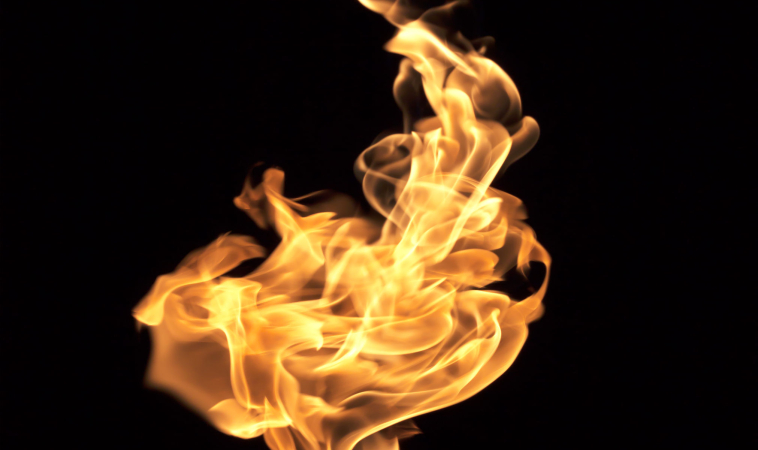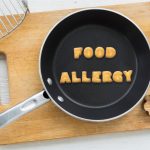Applications in Practice
John H. Furlong, ND
Naturopathic medicine sits at a crossroads. As we progress through the 21st century, we have an opportunity to re-assert our unique leadership place in natural medicine. We can challenge ourselves to build on our traditions while advancing into ever more promising applications of our methods. How do we continue to expand and refine our time-tested approach? How can we maintain our relevance when other professions are realizing our practical, efficient, and scientific methods, and pushing forward to suit their niche in the alternative medicine realm? I recently had a patient describe to me a procedure they’d had performed in an ENT’s office: fiber-optic-guided pneumatic expansion of the nasal turbinates …ie, nasal specifics! We can adapt and modify our treatments and hold fast to the principles that keep naturopathy relevant and effective. As Dr Bastyr said, “the truth of our medicine will always win out, the truth of what we are doing will always survive.”
The use of external heat in healing is age-old. Virtually every continent and societal system throughout time has used thermal baths for healing and rejuvenation. With development of specific applications of these traditional methods, we can improve upon its historical benefit and raise the awareness and use of this form of nature cure. Hyperthermia is variously defined as elevation of the body-temperature to the range of 100-105 °F for achievement of medical treatment purpose. We further refine the definition to include “mild hyperthermia,” which utilizes induced temperature increases from101-103 °F.1 Hyperthermia is shown to have various physiologic effects that are of significant benefit to the aims of naturopathic treatment. Kellog referred to a multitude of physiologic changes associated with fever or application of heating methods.2Modern research of such methods highlights enhancement of peripheral circulation and endothelial function,3 modification of growth hormone and natural killer (NK) cell function, and enhancement of anabolic and immune status.4 This is not to diminish the more traditional use of hyperthermia for assisting hepatic and systemic detoxification processes via enhanced diaphoresis and toxin discharge through the sweat. Unfortunately, there are many instances where that type of enhanced detoxification may be needed.5
Incorporation of mild hyperthermia as a standard therapy in naturopathic practice has great potential to amplify the benefits of our other methods. Mild hyperthermia has a wide range of applications in clinical syndromes and disease processes. Hannuksela provides an excellent review of the medical aspects of traditional dry sauna bathing.6 One can offer the therapy as part of an overall healing regimen or as a stand-alone detoxification program. In proposing it as a course of treatment for patients, concerns about the heat and “stress on the heart” frequently arise. We may avail ourselves of a large body of literature investigating this concern. To summarize some of the more salient points, mild hyperthermia is shown to be very well tolerated by patients having a variety of cardiovascular conditions, from those with hypertension and arrhythmias, to those recovering from coronary bypass surgery, and even those with chronic heart failure.7,8 So, we can confidently state that with care and attention, mild hyperthermia is safe and extremely well-tolerated.
To begin a series of treatments, I generally recommend an initial evaluation including BP, cardiac and circulatory evaluation, and standard chemistry screens to assess electrolyte balance and renal function (especially creatinine). Obtaining urine pH and specific gravity is of additional interest, ideally before and after each session. I explain the heating principle of hydrotherapy to the patient, highlighting the slow, steady heating phase followed by a rapidly-rising body temperature (superheating phase), in which we gain benefit but must be vigilant, due to individual tolerances. I monitor oral temperature upon entering the steam chamber, as well as the point at which the person reaches their thermal tolerance point for the session. I emphasize that it is not a contest to achieve a certain temperature or duration, but that each session is a unique experience and, thus, it is important not to overdo. It is essential that persons enter each session being well-hydrated and having had an adequate, but not excessive, meal 2-3 hours prior to the hyperthermia. Syncope can result from mild hyperthermia, even of short duration, with this disconcerting response sometimes presenting quite suddenly. It is made more likely by hypotension or lack of adequate nourishment prior to the treatment. While there are cultural and personal preferences for each type of external heating source, I use a steam sauna as a practical adaptation of the traditional sweat lodge. This method is time-efficient, rapidly induces diaphoresis, and does not involve electrically-generated waveforms…just heated water vapor.
Development of Technique and Procedure
We can now explore the rationale and practical aspects to expand the use of in-office steam or infrared sauna systems to enhance the vis medicatrix naturae. A particularly rewarding aspect of mild hyperthermia application is the ease with which this therapy coordinates with hands-on therapies such as massage therapy/shiatsu, or musculoskeletal reintegrative techniques. I find that a series of treatments over a 4-week timeframe provides a strong impetus to effective changes. The treatments incite deep muscular relaxation and a cytokine shift, fruitful in shifting patterns of inflammation and generalized discomfort. One can proceed with mild hyperthermia treatments, knowing that a number of physiologic systems will be strongly affected. The skin is a tissue that shows great response since peripheral circulation is markedly increased with sauna-therapies. Common skin conditions (eg, eczema, psoriasis) are thus amenable to this type of treatment. Beyond this, the applications of the technique are really limited only by the thoughtfulness of the practitioner and the clinical indications presented by the patient.
Applications in Naturopathic Oncology
One setting in which to consider initiation of mild hyperthermia is the care of patients undergoing treatment for malignancies. When combined with radiotherapy and/or chemotherapy, the benefits of hyperthermia are profound. Indeed, there is a Renaissance of this technique currently in Europe, particularly in Germany. The current clinical research of this phenomenon is compelling, leading one author to point out:
Hyperthermia added to radiotherapy or chemotherapy results in up to a doubling of complete response rate… If a drug were to achieve similar successes, its corporate sponsor would have announced it as a new breakthrough in cancer treatment…
(van der Zee J, 2002)9
The excellent response to hyperthermia is due to the well-known attribute of cancer cells being more susceptible to heat stress:
Hyperthermia is an ideal complementary therapy to radiation. Cancer cells most resistant to radiation are precisely those most sensitive to heat. Cells that are resistant to radiation include those that are hypoxic, at low pH, nutritionally deprived or in S phase of the cell cycle. All of these characteristics make cells particularly sensitive to heat.
(Hurwitz MD, 2010)10
The temperatures used in clinical studies are typically higher than those safely accomplished in the office via infrared radiation or steam sauna, but with a combination of directed natural product therapy and the hyperthermia, we may achieve significant benefits in our cancer patients. We must avail ourselves of the abundance of research regarding the effects of natural products on immunity and apoptosis, and recognize the power of these agents.11, 12 In combination with the indicated chemotherapy and radiation treatments, we can design supportive regimens for patients that are individualized and effective. Such a regimen might be initiated with phytomedicine via mushroom polysaccharides,13and modification of clinical response with curcumin 14and other flavonoid compounds such as quercetin.15 I typically use large loading doses of quercetin on the day before and the day of the hyperthermia to take advantage of the additive effects of the temperature elevation with quercetin’s cytoxic effects.16 My experience with this particular strategy in oncology patients is encouraging, almost always observing stabilization of their condition. My expectation has become one of extended, progression-free survival and I’ve been privileged to see a number of free-of-disease responses 5+ years out from initial treatment. Patients generally feel well with such a regimen, knowing that they are strongly marshalling their immune forces with an approach that is not solely dependent on taking handfuls of “pills.” A number of them have purchased steam cabinets to use at home and show great resolve in pursuing the treatment regularly through their weeks of treatment.
Conclusions
Modern naturopathic medicine has proven methods which modify and enhance the healing response. Mild hyperthermia is shown to modulate immune function and apoptosis,17 profoundly influence the cardiovascular system, and enhance the response to chemotherapeutic agents and radiotherapy.18 With the methods outlined above, we have available to us a model of therapy that provides a uniquely naturopathic system to optimize the treatment of neoplasia. These are tools consistent with our heritage. We can thus empower cancer patients with options that often lead to enhanced clinical response and improved prognosis. Augmented mild hyperthermia is an approach whose time has come.
I take this opportunity to thank Dr Ed Madison, Dr Bill Mitchell, and Dr Joe Pizzorno for instilling in me their passion and commitment to naturopathic medicine. I am honored to have been the recipient of their teaching and the carrying-forward of Dr Bastyr’s legacy. I also thank Dr Russell Jaffe for giving free rein to my curiosity and instigating its growth, and to my father, a WWII medic and a compassionate, skilled doc! JHF
References:
- Tarner IH, Müller-Ladner U, Uhlemann C,Lange U. The effect of mild whole-body hyperthermia on systemic levels of TNF-alpha, IL-1beta, and IL-6 in patients with ankylosing spondylitis. Clin Rheumatol. 2009;28(4):397-402.
- Kellog JH. Rational Hydrotherapy. 2nd ed. Philadelphia, PA: F.A. Davis Co;1903:141-160.
- Ohori T, Nozawa T, Ihori H, et al. Effect of repeated sauna treatment on exercise tolerance and endothelial function in patients with chronic heart failure. Am J Cardiol.2012;109(1):100-104.
- Lackovic,V, Borecký, L, Vigas M,Rovenský J.Activation of NK cells in subjects exposed to mild hyper- or hypothermic load. J Interferon Res. 1988;8(3):393-402.
- Ross GH, Sternquist MC. Methamphetamine exposure and chronic illness in police officers: significant improvement with sauna-based detoxification therapy. Toxicol Ind Health. 2012;28(8):758-768.
- Hannuksela ML, Ellahham S. Benefits and risks of sauna bathing. Am J Med.2001;110(2):118-126.
- Scherf HP, Meffert H, Bäumler H, et al. [Effect of a single mild infrared A hyperthermia on body temperature, heart rate, blood pressure and blood viscosity in healthy probands and patients with stage I and II arterial hypertension]. Dermatol Monatsschr.1989;175(12):733-740.
- Kihara T, Biro S, Ikeda Y, et al. Effects of repeated sauna treatment on ventricular arrhythmias in patients with chronic heart failure. Circ J.2004;68(12):1146-1151.
- Van der Zee J. Heating the patient, a promising approach? Ann Oncol. 2002;13(8):1173-1184.
- Hurwitz MD. Today’s thermal therapy: not your father’s hyperthermia: challenges and opportunities in application of hyperthermia for the 21st century cancer patient. Am J Clin Oncol. 2010;33(1):96-100.
- Trudel D, Labbé DP, Bairati I, et al. Green tea for ovarian cancer prevention and treatment: a systematic review of the in vitro, in vivo and epidemiological studies. Gynecol Oncol. 2012;126(3):491-498.
- Shanmugam MK, Kannaiyan R, Sethi G. Targeting cell signaling and apoptotic pathways by dietary agents: role in the prevention and treatment of cancer. Nutr Cancer. 2011;63(2):161-173.
- Komuta K, Nanba H. Effect of Maitake (Grifola frondosa) D-Fraction on the activation of NK cells in cancer patients. J Med Food. 2003;6(4):371-377.
- Strimpakos AS, Sharma RA. Curcumin: preventive and therapeutic properties in laboratory studies and clinical trials. Antioxid Redox Signal. 2008;10(3):511-545.
- Cruz-Correa M, Shoskes DA, Sanchez P, et al. Combination treatment with curcumin and quercetin of adenomas in familial adenomatous polyposis. Clin Gastroenterol Hepatol. 2006;4(8):1035-1038.
- Fujita M, Nagai M, Murata M, et al. Synergistic cytotoxic effect of quercetin and heat treatment in a lymphoid cell line (OZ) with low HSP70 expression. Leuk Res. 1997;21(2):139-145.
- Dayanc BE, Beachy SH, Ostberg JR, Repasky EA. Dissecting the role of hyperthermia in natural killer cell mediated anti-tumor responses Int J Hyperthermia. 2008;24(1):41-56.
- Issels RD. Hyperthermia adds to chemotherapy. Eur J Cancer. 2008;44(17):2546-2554.

















This design is incredible! You most certainly know how to keep a reader amused. Between your wit and your videos, I was almost moved to start my own blog (well, almost…HaHa!) Fantastic job. I really enjoyed what you had to say, and more than that, how you presented it. Too cool!